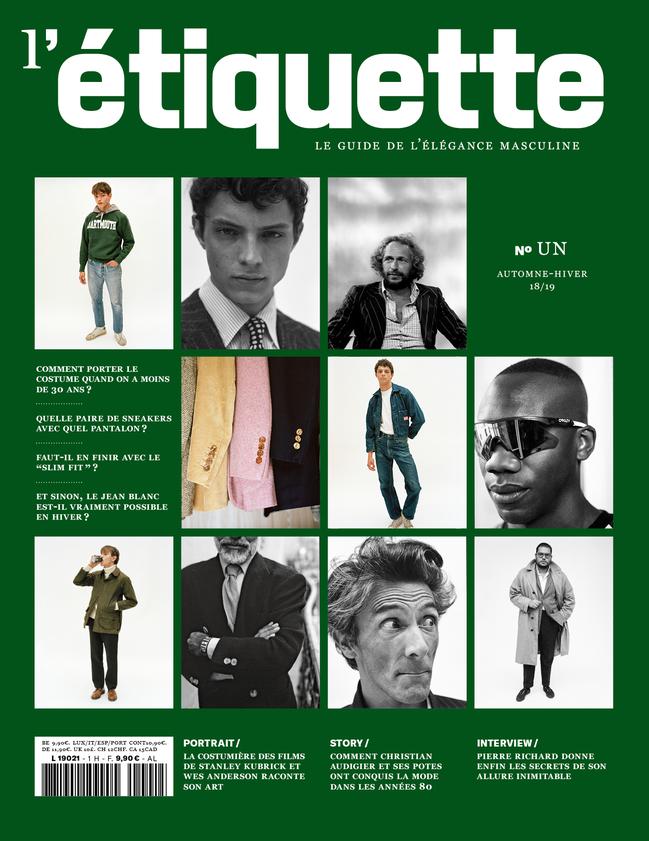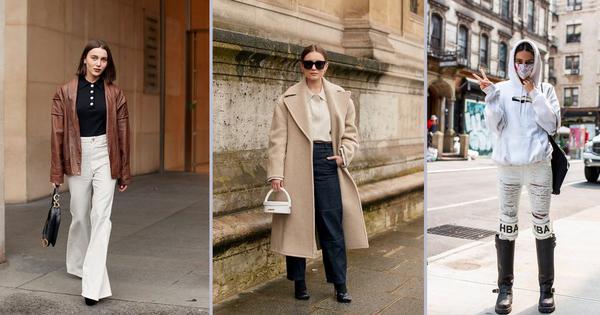
This is not a fashion magazine. It is under cover of a pirouette à la Duchamp that “L'Étiquette”, a chic newcomer to So Press, arrives.
“Why launch yet another fashion magazine? Precisely not to talk about fashion“, unchecks Marc Beaugé from the editorial of the first issue of L’etiquette. Readers will have recognized the art of the cool counterpoint specific to the So Press galaxy – So Foot, So Film, Society – of which this fashion-magazine-which-is-not-really-one is the new- born. At the head of the editorial staff and under the watchful eye of vintage stylist Gauthier Borsarello, the Monsieur Chic of Quotidien is betting on competing with Vogue, Vanity Fair and GQ, by asking a more delicate question than it seems: how to talk about fashion in 2018 without going into superficiality, stereotypes or glossy flyers? Once the opus in hands some answers are woven.
So cool?
“We are not Conde Nast!, laughs the journalist, and if So Press is not too well known for its relationship to clothing, our way of telling stories had to be there, our DNA. Of the three Hs venerated by the cap boss Franck Annese (Human, Humor, History), we find here the quintessence. From the punk ethic of anti-Trump Brendon Babenzien, former artistic director of Supreme and staunch opponent of the Black Friday madness (“no worker should suffer to make fucking clothes”) to the Avignon odyssey of ace of the thrift store dressing up Giscardian France with great American cool, interviews and reports insist on what the clothes tell about who wears them. Fleeing prescriptions for shopping addicts, the label dreams of being a “good stylish friend but not a fashion victim, who gives you casual advice on how to dress a little better”, according to its instigator. Since it's not because we tell fashion differently that it has to be done anyhow, you will know how to wear the trench coat or the K-Way, assume the bucket hat and the pullover.
With this first issue printed in 120,000 copies, So Press adapts its imagination to the very consensual territory of fashion journalism, an open door to brands and other advertisers. “But those who advertise present values that suit us, that we can assume,” reassures Marc Beaugé about these concessions. Aware that the "label" in question is sometimes three digits over the clothes that are displayed full-page, the latter tempers: "there is also Celio" in this magazine which to be read "does not require having Balenciaga shoes on your feet! ". Beneath its smooth surface of small precise style, The label questions the possibility of a truly democratic fashion magazine by relativizing the sacrosanct cool, the gray zone between casualness (the element that "jokes") and the application of codes of good conduct. Sum of contradictions, fashion is eternal and ephemeral, “totally superficial and absolutely fundamental“.

Preppy
“There are rules but also ways to divert them“, assures in this sense a Marc Beaugé in Fight Club mode, authorizing in these aesthetic pages the wearing of brown in town (despite the Anglo-Saxon adage “no brown in town“ ) while at the time of the great revolutions reversing the gender injunctions imposed by fashion. Manual of men's trends, The label questions this cursed masculinity, letting tailors and designers question the symbolic significance of the suit, a silky symbol of a classy and outdated, paternalistic and sentimental masculinity. We thus learn that the traders cut with a scissor the ties of their colleagues when these were too beautiful. Phallocratic at will. The time of these detailed observations are expressed as many "obsessive neuroses" which go beyond the framework of the shops to reach the couch of the shrink.
Without really choosing between Lacan and Lacoste, The label avoids the hipster snobbery suggested by its title by honoring popular culture, that embodied by Lino Ventura, Jean Gabin, Alain Delon, and of course Pierre Richard, who is the subject of a long interview. We learn that the tall blond with a black shoe liked to show off in his underpants with Jean Carmet, but also…wear Yves Saint Laurent. A fine example of unbolting clichés if any. "Basically the label is that of the garment, but also the know-how, something very French", affirms the editor-in-chief with the well-knotted tie, happy to have been able to escape the most pitiful jokes ( “We hesitated with So-Quette!”).
If Marc Beaugé likes to evoke “the depth of superficiality” dear to Nietzsche (“because it's always classy to quote Nietzsche!”), he still prefers to read Roland Barthes, according to whom “clothing is a social fact“. The label applies this philosophy of the fitting room by showing us that "clothing is sociological, political, from Macron's four hundred euro suits to the scandal of Fillon's suits, via Mitterrand and Chirac, who shared the same tailor" . Because choosing your t-shirt right out of bed is already "the expression of an intimate story, of a choice", The label suggests imposing its singularity in the face of "fashion, so strong that it manages to impose tastes on people, convinces them to wear”. Faced with hollow trends that stultify, the magazine arises in the midst of Macronie to better remind us of these words of Coco Chanel: “There is no fashion if it does not take to the streets“. A slight class struggle manifesto, by those who have it.
The label, 9.90 euros, 168 pages, released on October 18, 2018







